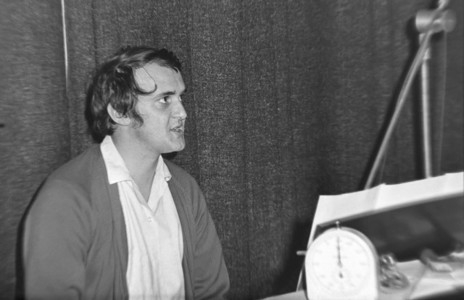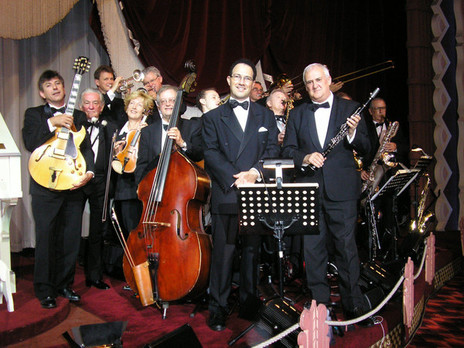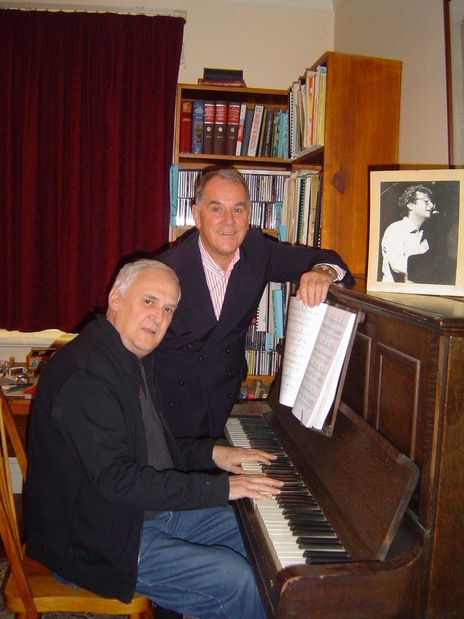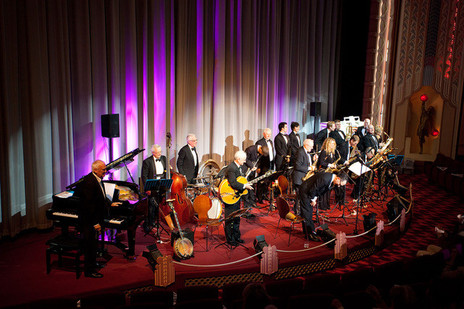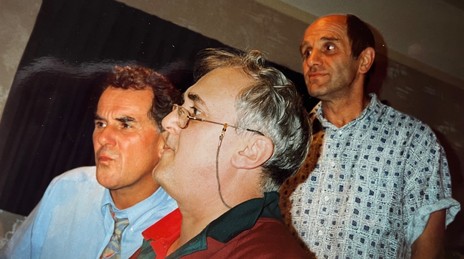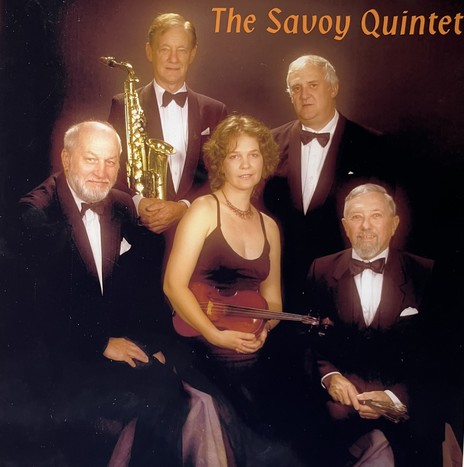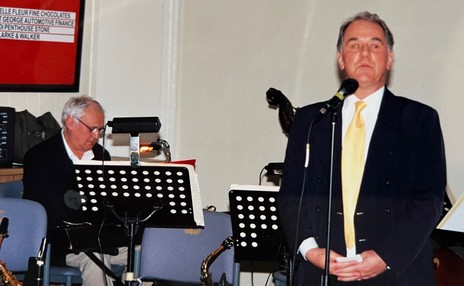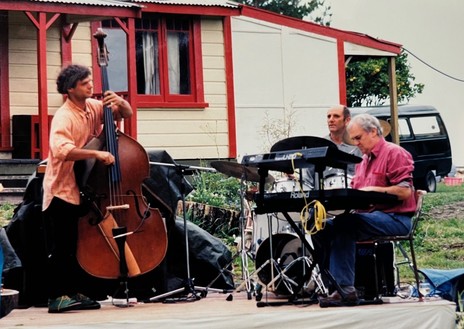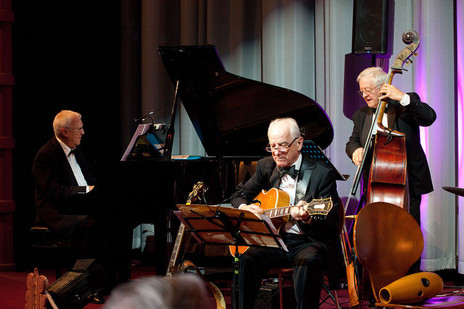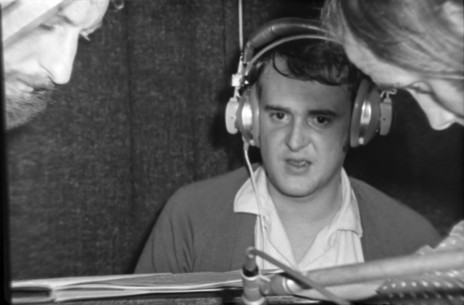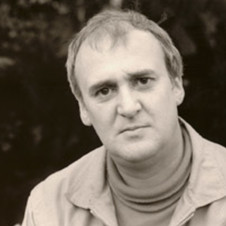Today [2011] he is the pianist in a couple of bands in Sydney, where he’s mostly lived since the late 1970s.
Charles had musical parents, his mother played the piano and his father played second tenor sax and clarinet in dance bands in Wellington in the late 1930s until the early war years.
He started piano with Sister Kasimir at St Joseph’s, Brougham Street, Wellington. “She also encouraged us to try other instruments,” he says. “We had to take a cello home and work up something on that, and violin occasionally too. The only thing I didn’t like was exams, although I did them until Form Three, by which time I’d opted to go to the Marist Brothers Juniorate in Tuakau.”
In his second year at Tuakau, the Marist Brothers organised music teachers. There was no worry here about exams. His new teacher said he could play what he wanted and that she would help him. He had three pieces with him, he says. “A solo version of Rhapsody in Blue, some piano rags by Scott Joplin, and some transcriptions of Count Basie solos.” Unfazed, the teacher said, “Some of these are going to be too hard for you but you could do the Count Basie pieces as a duet with one of the other boys.” So we did. I struggled away with Rhapsody in Blue but it was terrific to be able to do this and I really enjoyed the music I was playing.”
Back in Wellington at St Patrick’s College (Town) for the sixth and upper-sixth forms, Charles struck up with music buffs such as brothers Roy and Geoff Murphy, and Bruno Lawrence from nearby Wellington College. “We played anywhere we could find, the school library, anywhere,” he says. “When I left school, I thought I’d do an arts degree and I did do one music unit at Victoria and also played music with the University Jazz Club. It was like a gap year.”
The restless 1960s saw the music study stop and Charles moved into journalism at the Evening Post and then the Tourist and Publicity Department. He married Judy Robins, whose sisters Pat and Veronica had, respectively, married Geoff Murphy and Bruno Lawrence. Judy convinced him to finish his BMus, which included a year studying piano with the “legendary” Dutch-born pianist and music teacher Diny Schramm, who gave him Mozart sonatas, some Schubert and Hindemith. “Sheet music was difficult to get then and she interested me in trying other more serious music that I could borrow from the university library or from the NZSO.”
As a musician, he worked as part of the 1970s touring group BLERTA.
Charles then became a presentation officer at WNTV1 and was selected for one of the first NZBC television producers training courses. This led to work producing children’s magazine programmes, and On Camera with Irvine Yardley, then joining NZBC Current Affairs as studio director on Gallery, produced by Des Monaghan. He also directed several dramas including Pukemanu, Buck House, Lunch with Richard Burton, and Report on Henry Bascombe. As a musician, he worked again with Geoff Murphy and Bruno Lawrence on the soundtrack of their 1970 TV heist drama Tank Busters, and as part of the 1970s touring group BLERTA, the musical and theatrical cooperative.
The next decade was spent between Wellington and Sydney. BLERTA were in Sydney and there were gigs with them. Then, with his music and television experience, Charles became a producer/director with the ABC Music Department. It was “an enjoyable job in the entertainment department where I was directing mostly fine music programmes – concerts, operas, recitals, studio-based magazine-type music programmes with visiting conductors and soloists like Vladimir Ashkenazy. And there was a concert with Maxim Shostakovich conducting his father’s Ninth Symphony, just a few days after he had attended his father’s funeral in Moscow.”
During these years, Charles composed the music for the New Zealand TV movie The God Boy, based on Ian Cross’s novel. Two years later he became TV One’s head of entertainment programmes, which included the controversial Neville Purvis Family Show, starring Arthur Baysting. “I also organized some programmes with the NZSO using their Willis Street rehearsal studio, so we did Mozart, music like that. There wasn’t room there for the camera crew and the whole orchestra.”
In Sydney, he produced the children’s programmes Earth Watch, Watch this Space, and the very popular Mr Squiggle, Australia’s longest-running children’s series.
Charles’s success with movie soundtracks continued in the early 1980s, with the scores for the Geoff Murphy-directed movies, the jazzy Goodbye Pork Pie, the other-worldly The Quiet Earth, and what was described as a “Māori western”: Utu. There was no large studio in Wellington at that time and Utu, composed for full symphony orchestra, was recorded by the NZSO in the Wellington Town Hall. Charles later arranged a suite for orchestra from it, and film reviewer Jonathan Dennis used an evocative extract as intro music to his highly regarded film review programme on Radio New Zealand.
Although Charles is personally “fonder” of the Utu score, The Quiet Earth has been kinder in terms of sales and royalties, especially in Europe. His other scores include the New Zealand 1984 TV movie Iris, based on the life of the writer Iris Wilkinson (Robin Hyde).
While Charles is fonder of his ‘Utu score, ‘The Quiet Earth’ has been kinder in terms of royalties.
Living in Australia permanently since 1985, and working as a freelance composer, arranger, pianist and TV director, Charles has continued composing for New Zealand projects. These have included A Soldier’s Tale, TV’s Bread and Roses, based on the early life of politician Sonja Davies, and the Lange-era mini-series, Fallout (1995). He also composed music for the four-hour The Sound and the Silence, a New Zealand-Canadian mini-series about Alexander Graham Bell, the inventor of the telephone. Charles’s own favourite is the soundtrack he wrote for Chris Thomson’s Australian TV-movie, The Perfectionist, from the David Williamson play which has, as Charles says, “an affectionate borrowing from Mozart’s Piano Concerto No.21 K467, the so-called Elvira Madigan.”
When we talked in 2011, Charles mostly played piano in two bands, one a small quintet that plays sweet music from the 1930s and 40s. “The nearest comparison I can make is with the dance music of Victor Silvester’s ballroom orchestra. The second group is a bigger band, ranging from 12 to 16 players, called the Mellotones, and that’s big-band sweet, not necessarily ‘jazz’ sweet. We play some Artie Shaw arrangements, Tommy Dorsey and Benny Goodman. It’s not a Count Basie-type band, it’s more like the commercial white swing bands of the 30s and 40s, somewhere between Guy Lombardo and Tommy Dorsey. These are quite formal comoposeres and they weren’t embarrassed by the fact that the music they played was for dancing.
“I started with a band called The Yellows Rolls Royce in 1987, when I first drifted into this kind of music, and I’ve stayed with it happily ever since. Playing this white swing music of the 30s and 40s leaves you with a good feeling. Most of it is happy and positive and there’s also the positive happiness of playing in a big group, which, as a pianist, unless you’re a very fine chamber music pianist or a concert pianist, you don’t get to do a lot outside of jazz.”
--
John Charles passed away on 7 May 2024.
--
This article first appeared in the October 2011 issue of Ritmico, the journal of the Institute of Registered Music Teachers of New Zealand, and is republished with permission.
--
Read more: Film Music Aotearoa part 3, the early 80s

